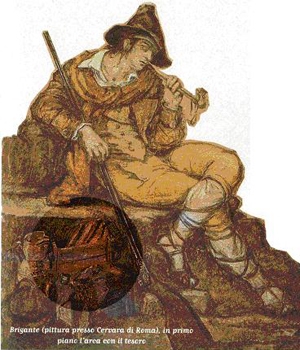THE
MAFIA in 1592.
Marco
Sciarra, a robber baron from the Abruzzi
The historian Sir James Craufurd noted that Italy
In some sources Sciarra is
depicted as a Robin Hood figure. He collected
taxes from the rich, but I’m not sure that he distributed them to the poor. When
the town of Piceno 25 April 1592 ). By that time Sciarra
commanded a well-armed troop of 600 bandits. Finally the Pope sent an army
against them and managed to drive them out of the papal territory. At this
point Sciarra decided to go legit. The Venetian state hired him and his troops
to fight the pirates who endangered their shipping routes.
As
you can see, bandits have their good uses, but Sciarra’s second career was brief.
He was assassinated by a fellow bandit in 1593. The traitor was given a pardon by
the grateful pope.
The
Duke of Ferrara also found the bandits handy, at least those he caught. He used
them to discourage poaching on his estate. According to Craufurd, “he hung up
the banditos in the fields, some with partridges, some with pheasants, some
with hares about their legs, the duke’s officers giving out that they were put
to death for killing those animals.” There was a sharp decline in poaching
after that.

No comments:
Post a Comment